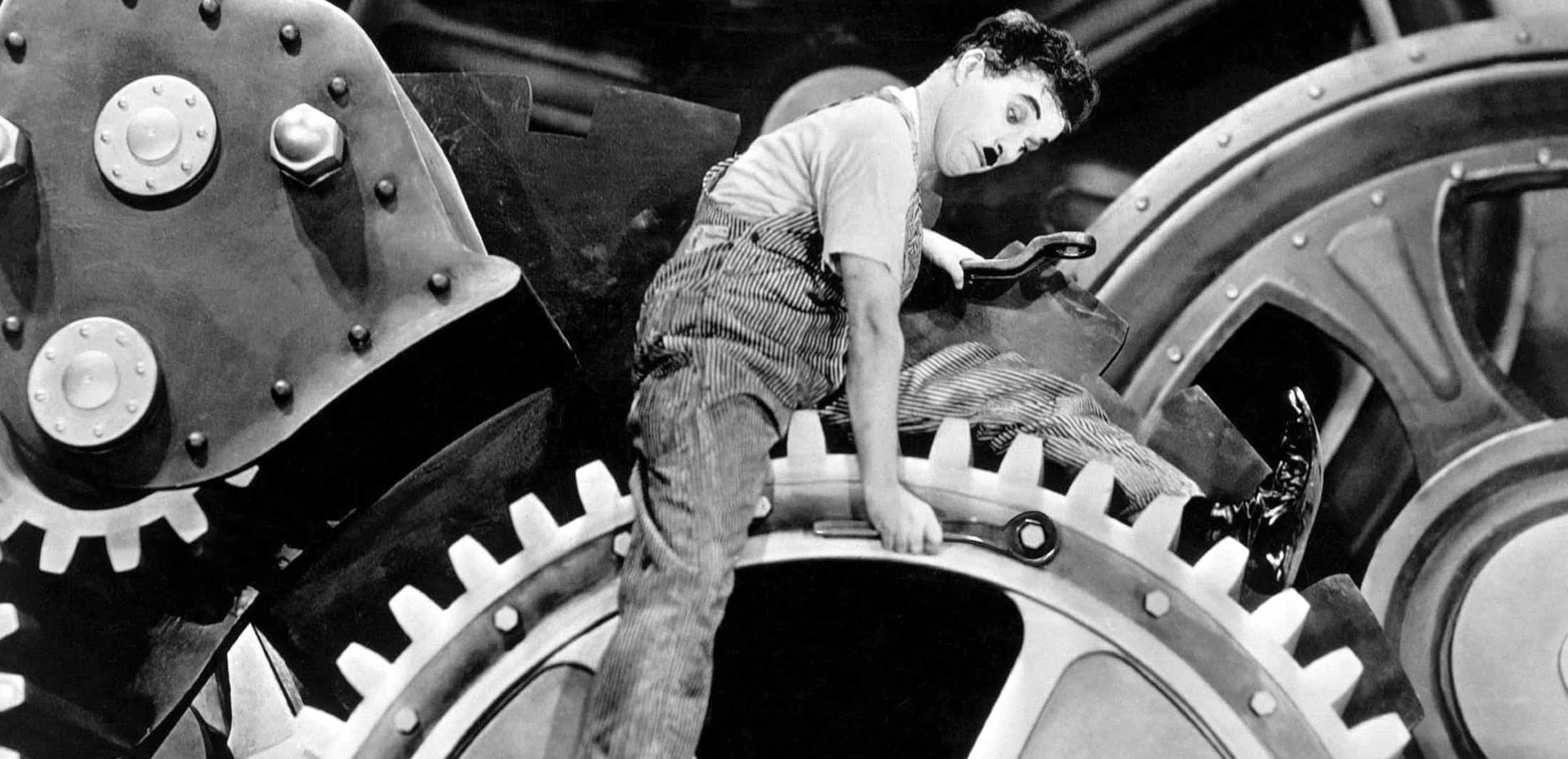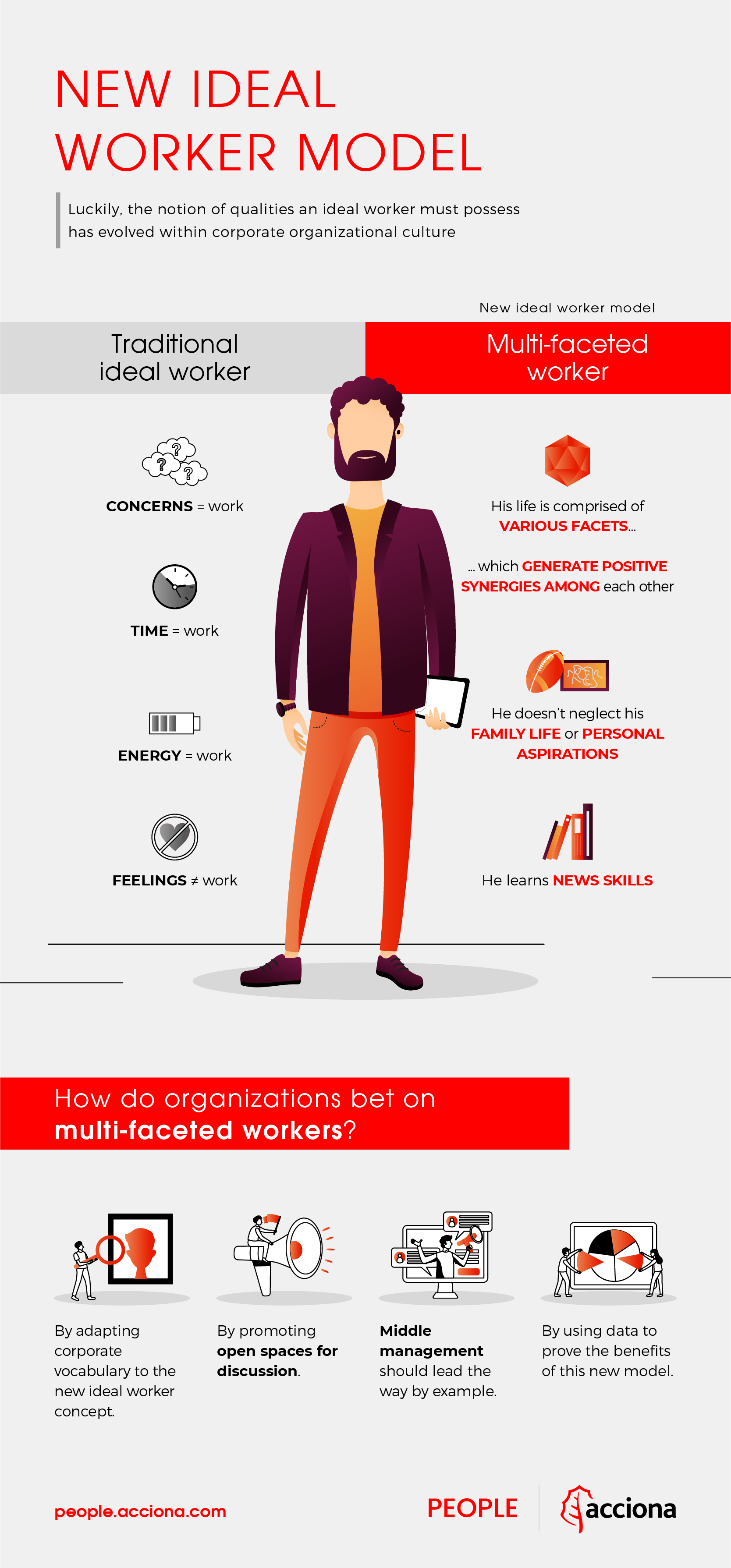Who’s the ideal worker? It’s a question not easy to answer at all, mainly because jobs are often perceived as an abstract, unoccupied category. However, each required position within an organization ends up being filled in by an individual, with his dreams and fears, his skills and personality, his past and his present, his dignity.
But the notion of ideal worker is the mental image that we have unconsciously assimilated of who’s the ideal worker. This abstract understanding, far from being an ethereal concept, has many more practical implications than those we can imagine a priori.
One-dimensional people: the ideal workers in the past
Traditionally, the ideal worker was perceived as an individual with few duties and responsibilities outside work, showing no weak spots, and whose main and primary focus in life was his profession. In other words, somebody completely devoted to his career. We’re talking about a one-dimensional person.

This idea is based on the so-called theory of scarcity, which basically assumes that time, energy and attention are finite; accordingly, if they’re assigned to a certain role, they’re not assigned to others. With that perspective in mind, it is accepted that the fewer roles a person has, the better worker he will be, since most of his time, energy and attention will be devoted to a unique domain: (remunerated) work.
Arlie Hochschild, an American sociologist at the University of California-Berkeley, noticed that a new concept had begun to spread around Silicon Valley during the late 1990s. That concept was zero-drag, a physics-related notion referring to an objective’s absence of friction in relation to its environment, an allegory of that ideal modern-day worker. According to said notion, the ideal worker was the one with a coefficient of zero, with no external friction, that is, with few or no responsibilities (friction) whatsoever outside work distracting him. To a certain extent, this idea is still in the heads of many executives, middle managers or HR staffers at many companies, and it’s totally in line with the one-dimensional worker notion.
Multi-faceted person: the new ideal worker
Nevertheless, another perspective recently started to challenge the classic standpoint. It’s based on an expansive approach which argues the contrary: attention, energy and even time are not finite, but expandable. In other words, they can be generated. Moreover, they can be transported from a domain to another.
For instance, a task or project that is properly done and recognized in the workplace during the day can generate extra energy that can be allocated for the family later in the evening. In the same vein, a voicemail message from a son can provide energy to the wrapping up of a project. Same happens with other roles: a volunteer work for the community can enhance empathy, a quality which in turn can be translated into the workplace.
This expansive approach has led to a theory that has enjoyed some success in the academic world, known as work-family enrichment. Said theory suggests that, contrary to the classic vision, an active professional aware of the diverse spheres in his life —be it work, family, community or others— will become a better worker, since he will develop skills or knowledge in every role that will help him thrive professionally. We would call that a multi-faceted person.
It’s necessary to change the notion of organizational culture
Paradoxically, although the traditional notion of ideal worker differs from the reality of the majority of employees —little or no involvement at all in house chores, showing feelings is avoided, as is speaking of family or care being provided—, the prospect of adhering to it continues to be widespread and mainstream within many contemporary organizations. In other words, it seems that some workers “impersonate” —either unconsciously or out of necessity— traditional ideal workers without being so. And there’s a pretty interesting consequence to that: within this kind of context, it’s usual to witness how the implementation of work-life policies is unsuccessful, since professionals feel that by taking advantage of them, they’ll infringe the still-prevailing notion of ideal worker. One of the clearest examples of this is the fear to take a parental leave, especially when we talk about paternity.
The solution, therefore, calls not only for elaborating innovative flexibility policies, but also for a renovation in organizational culture. This implies to turn our gaze to the ideal multi-faceted worker —to the Person, in essence. This won’t happen overnight, neither will be solved just by implementing new policies or programmes. It means progressing towards a new mentality within the company itself, and those are some pretty big words. These could be the possible steps to follow:

First and foremost, a new vocabulary should be developed —with terms like new ideal worker or multi-faceted person, for instance—, a new language allowing us to aspire to this new perspective. This new vocabulary capable of putting said perspective into words can be either internally elaborated or imported.
Organizations should implement forums for discussion (open spaces) in which people can express openly and freely their concerns regarding work-life balance. It’s essential to encourage the participation of those who are usually the least heard in this field (men, managers, manual workers).
Middle management plays a crucial role. They’re, partially, gatekeepers of flexibility policies; and their use, formal or informal, depends on management and style. Academic literature mentions Family Supportive Supervisor Behaviors (FSSB). It’s important to boost and develop empathetic middle management, capable of seeing each team member in its entirety (multi-faceted), rather than a one-dimensional person (worker).
What can be measured, can be evaluated. Companies should implement intervention programmes in order to assess the organizational benefits of having multi-faceted, as opposed to one-dimensional, people aboard. The outcome of said intervention programmes may be useful to convince top managers.
Only by updating the way a person is regarded, thanks to the opening of new spaces for discussion, increased awareness of middle managers who can help create a new organizational culture, and a new vocabulary contributing to put this new perspective into words, we’ll be able to build truly sustainable organizations.


